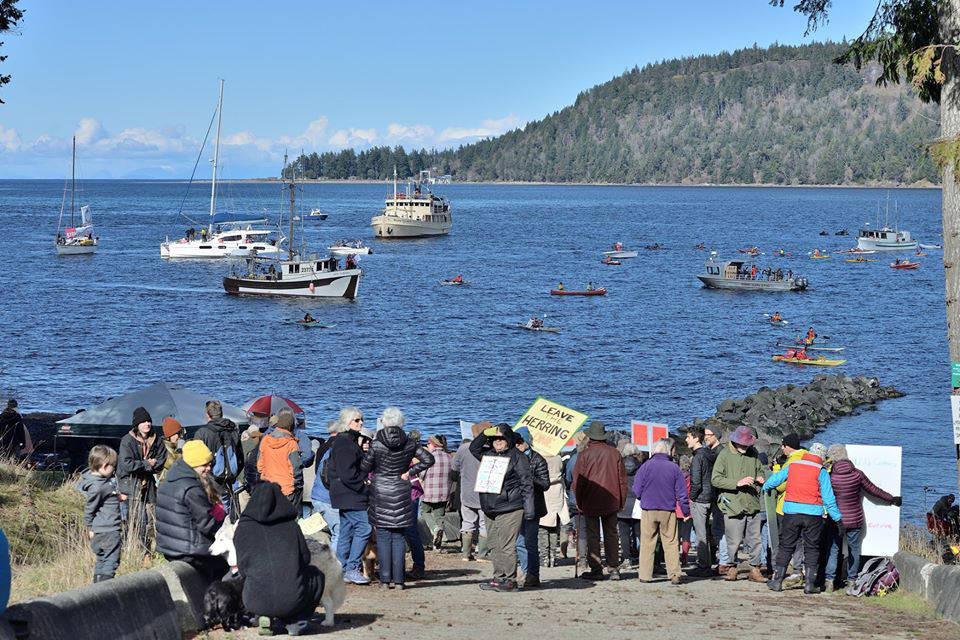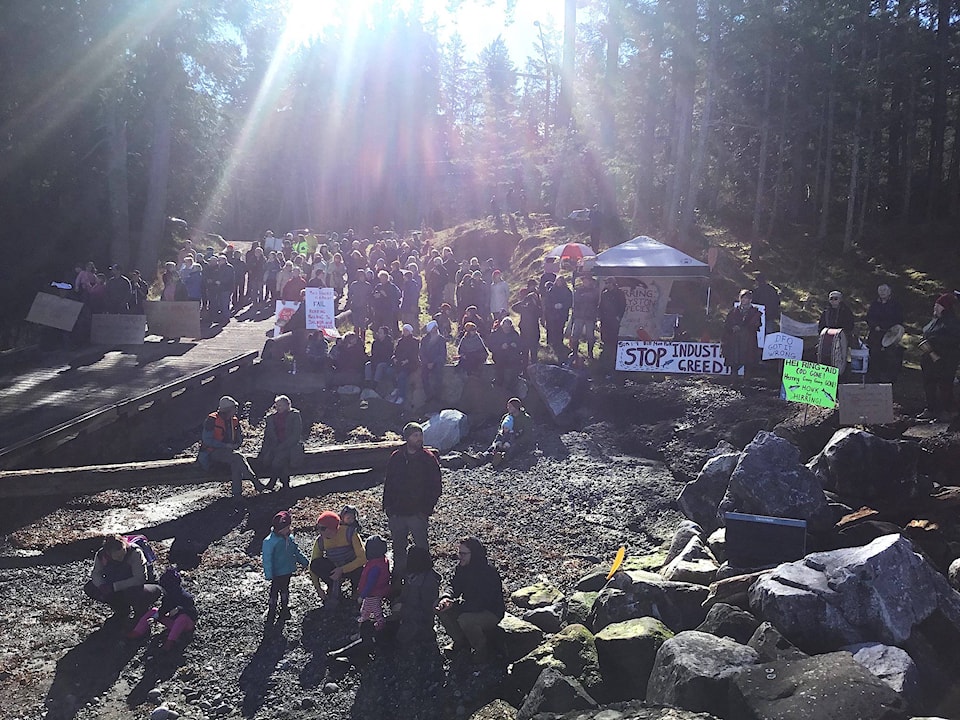Hundreds of people gathered Sunday on Denman and Hornby islands to protest the Salish Sea herring fishery. Those with kayaks and canoes paddled from Bill Mee Park on Denman and from Ford’s Cove on Hornby, gathering in Lambert Channel to create a flotilla protest.
“It was a show of solidarity. It was very heartening to see that level of support,” said Denman resident Keith Porteous, who had a front row seat when the seiners came in. “They were here all night with floodlights and generators. It’s kind of like an industrial park moves into your neighbourhood for a while.”
Most of the fishing took place Sunday, though some gill nets were still on the water Tuesday.
“The gill nets are doing really well,” Phil Young of the Canadian Fishing Company (Canfisco) said Tuesday. “They were almost finished last night. They’re probably at 90 per cent of their quota so far in four days. The biggest problem for most gillnetters is that the fishing was so good, there weren’t enough packers out there to take the fish away, so guys had to pull their nets out.”
The protesters want to raise awareness about the herring stock, which they say is in rapid decline. Conservancy Hornby Island and Courtenay-Alberni MP Gord Johns have both launched petitions to suspend the fishery. Johns has gathered more than 5,700 signatures on his e-petition. For every 25 signatures, he is able to rise in Parliament and challenge Bernadette Jordan, the Minister for Fisheries and Oceans Canada (DFO).
LETTER - Herring fisherman offers his side of the debate
DFO has said the herring harvest level is 10,895 tonnes this season in the Strait of Georgia. The allowable catch was reduced by more than 50 per cent from the allowable catch in 2018-2019, in response to a lower stock forecast for 2020.
“The abundance of Pacific Herring is highly variable,” DFO said in a recent news release.
Porteous said DFO over-estimated last year’s return by their own estimations by 60 per cent.
“They’re still taking a quarter of an entire population every year,” he said.
“That is not sustainable. This is a classic case of using statistics and numbers to fudge reality…We have to stop this madness now for jobs, for the economy.”
Johns has called the herring fishery a “reduction fishery,” where less than 12 per cent is used for human consumption while the rest is used for cat food, animal feed, fertilizer and fish farms.
“When it’s gone it’s gone,” Porteous said. “It’s the lynchpin that feeds the salmon and some mammals here. It goes all the way to the top of the food chain.
“The fishers deserve to make a living and they deserve to be compensated if there’s a moratorium,” he added. “I don’t blame the fishermen, they’re not the problem. It’s a structural problem…Our ecology and our economy entirely depends on the viability of herring. If you kill the last viable spawn, it’s gone forever. And there’ll be nothing on the B.C. coast.”
Young said the herring manager thinks there will be “way more fish” when spawn surveys are conducted.
“He said there was herring everywhere,” Young said. “My only thing is, let’s wait and see what the science says. But in the end, if it does say that it’s good, where do we go from here? If the science says it’s great, how do we get them to recognize that it’s showing this huge increase? They’re quick to jump on the science. Are they going to say the same thing when the science (says it) goes up? We’re putting our faith in DFO science. Let’s see where this leads to after this year.”

